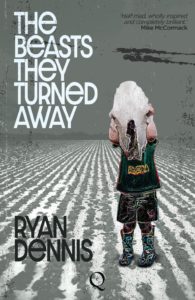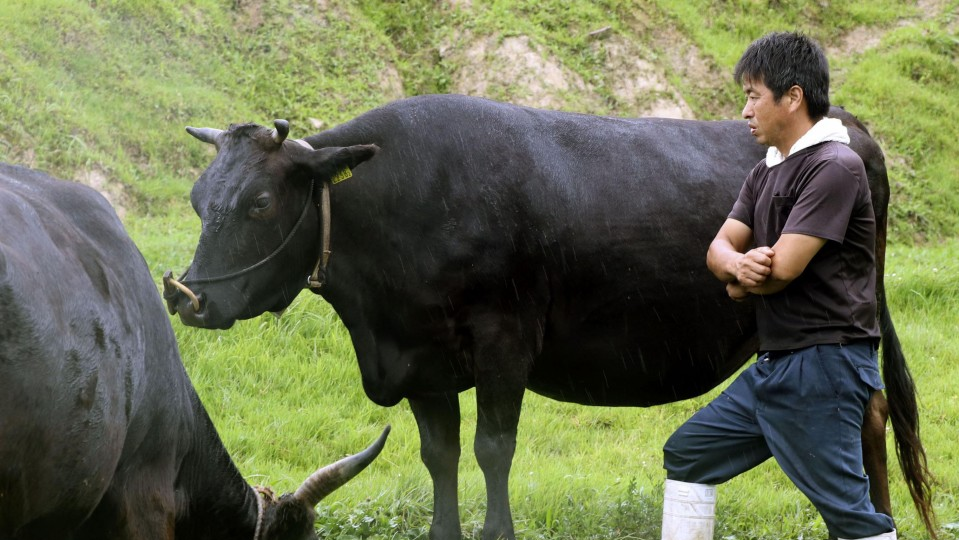I tend to be a quantity-over-quality type of guy.
Instead of a nice pair of jeans, I’d rather have three cheap pairs of Levis to take the pressure off washing. Rather than a Ferrari, I’d take a dented Ford that I wouldn’t get too upset over if it got wrecked, just getting another one instead. Why buy a pair of new shoes when you can buy three tubes of superglue and keep the old pair going?
I understand that not everyone is like that, though. A friend owns several expensive sushi restaurants in Italy, and has made a handsome living off the quality-over-quantity sort of people in Europe. To satisfy his clients, he imports Wagyu beef from Japan at $150 per pound. When he told me this, it prompted two questions: first to him (What is Wagyu?) and the second to my parents (Why aren’t we raising Wagyu?).
Wagyu is the most expensive beef cattle in the world, with a typical heifer costing as much as $30,000. Their story, in short, goes like this: about 5,000 years ago cattle were domesticated in Asia. Because they were mostly used for plowing rice fields or carrying wood out of the mountains, they began to be selected for large shoulders. Being bred for strength and endurance, they naturally developed more intramuscular fat cells. Because Buddhist tradition prohibited the eating of flesh, animals were only raised for their ability to carry out work. It wasn’t until 1867, when Japan made a conscious effort to become more westernized, that the Japanese began to eat beef. When the first beef was exported, foreigners recognized that Japan had something special.
The Wagyu cattle have a special gene that other cattle do not that promotes a unique marbling of the fat inside the meat. This gives the beef an incredibly tender and buttery texture. The fat, mostly unsaturated due to this singular genetic disposition, nearly melts at the touch, even before it hits the mouth. When glancing at a picture of a raw cut it becomes quickly apparent that this meat is nothing like your typical black angus. That being said, glancing at the price gives the same reaction.
It is often suggested that Wagyu are routinely massaged and fed beer to keep the meat tender, but this is mostly a myth (although I suspect my friend tells this to his customers). Being expensive animals, however, you’re not likely to find them in a crowded feedlot. There are four main breeds of Wagyu in Japan, with Japanese Black cattle accounting for 90% of the population. Wagyu beef often carries a name associated with the region from which it originates, as is the case of the most well-known Kobe beef (Kobe being the capital of the Hyōgo Prefecture). To protect the value of Wagyu beef, it must undergo rigorous government inspection, and only 3% of cuts receive a high enough grade to sell.
The attraction of producing $150-per pound meat has not been lost on farmers around the world. While Australia has the most Wagyu herds outside of Japan, the US, Canada and UK are following suit. In the United States the Wagyu are crossed with Aberdeen Angus and rebranded as American-Style Kobe Beef. Nonetheless, Wagyu beef obtained outside of Japan tends to fetch lower prices, especially from crossbreeds. Consumer note: Watch out for restaurants with “Kobe burgers” on the menu, as real Kobe is too tender to be able to be formed into a burger patty. In fact, to serve real Kobe beef, a restaurant must receive a license from the National Kobe Association in Japan, after verifying that it is of high enough caliber to be able to offer it. Currently, there are no new licenses being awarded.
If you’re keeping score at home, while Wagyu beef is the most expensive type of beef available, the single most expensive steak in the world is valued at $3,200 and is almost 20 years old. Kept in a ventilated cold negative room, this particular steak from the Boucherie Polmard farm in France is allegedly one of 103 “vintage beef ribs” stored like this on the planet, and only a few chefs are qualified to prepare it. From the French breed Blonde Aquintaine, the Boucherie Polmard farm puts special focus on keeping stress levels reduced for its cows. Beer and massages? I don’t know.
My Italian friend tells me that to eat Wagyu beef is a once in a lifetime experience. Since he is the restaurant owner and has likely eaten it many times, I’m not sure if he also picked up on the irony. Still, the way he describes it, I can see the appeal. I would nearly be ready to lay down my quantity-over-quality banner for one day and try it, if I had the money. Although…I couldn’t help but think: for the same price of a Wagyu steak I can probably have five Angus sirloins in the same night.
Now that would be a once in a lifetime experience.
This article is part of The Milk House Column series, published in print across three countries and two languages. It can also be found at themilkhouse.org.
This article appeared in a similar form in Progressive Dairyman and Farm and Livestock Directory.
*
Ryan Dennis is the author of the novel The Beasts They Turned Away, available now for pre-order here.
 Íosac Mulgannon is a man called to stand.
Íosac Mulgannon is a man called to stand.

